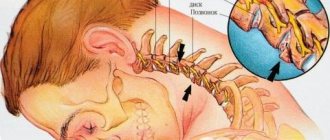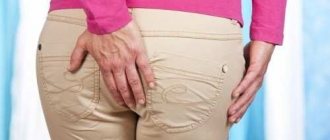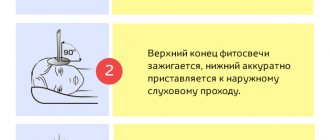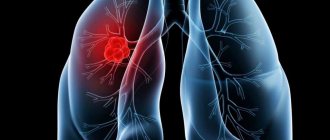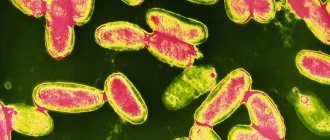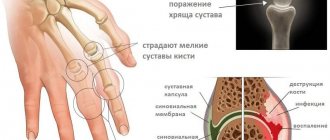Home / Health
Back
Published: 10/21/2019
Reading time: 4 min
0
1160
5 / 5 ( 2 votes)
Everyone has heard about gout, but few know what it is. How does gout manifest itself in men and women, how long does it last and what should we do when it appears. It is worth preparing for a possible fight against this disease, supporting it with relevant information.
This disease was once called "the disease of the rich." As old as humanity, but until now medicine has not established the causes of this disease and has not patented an effective drug for its treatment. Gout or arthritis are names for the same chronic disease caused by a metabolic disorder, the symptoms of which are severe pain and deformation of the joints.
In the later stages of the disease, serious complications appear in the form of irreversible damage to mobility and disability, as well as damage to internal organs (kidney damage, urolithiasis).
Joint disease affects men more often than women. And the initial symptoms of the disease can easily be confused with other diseases of the musculoskeletal system.
The cause of the disease is too much uric acid in the blood, which the body cannot cope with. Uric acid deposits in the joints in the form of crystals, causing severe pain.
The first sign of gout is severe pain in the joints. Most often it is the big toe; at this stage you can already identify gout and think about visiting a doctor. An attack of pain often occurs at night when the level of uric acid in the blood rises.
At this time, hyperuricemia occurs and sharp crystals of uric acid salts fall out. Find out how to treat arthritis and reduce uric acid levels in the blood. We will explain in simple terms the symptoms of gout, also known as arthritis, and why this disease may occur.
- What is gout
- Causes of gout
- Which joints does gout affect?
- Symptoms of gout in men and women
- Which doctor treats gout?
- Diagnosis of gout
- How to treat gout: with medication or folk remedies Symptomatic treatment of gout at home
Causes of the disease
Conditions for the development of gout occur when the level of uric acid in the blood exceeds the critical level for a long time. The condition is associated with the pathology of metabolic processes - the synthesis, transformation and utilization of purine substances in the body.
The development of gout is promoted by hypertension and metabolic disorders. Risk factors include excessive consumption of beer, chocolate, strong tea and coffee. Hereditary predisposition, excess weight, passion for meat products, and a sedentary lifestyle are of great importance.
Secondary gout develops:
- as a result of a tumor process, if it affects purine metabolism;
- due to long-term use of thiazide diuretics or cytostatics;
- against the background of a viral infection;
- as a result of severe stress.
The first attack of gout can be the body’s reaction to alcohol poisoning, the presence of an allergen in the body, high physical activity, severe bruise, or hypothermia.
Causes of gout
The disease appears due to several reasons, it is very important to identify them, since the symptoms depend on them:
- The nature of the patient’s diet (the menu was dominated by meat products, fish, alcoholic beverages, vegetable fats, the volume of which should be kept to a minimum, and high-calorie dishes).
- Provoking factors for a recurrent attack. This, in addition to eating disorders, includes excessive physical activity, the fact of hypothermia or overheating of the joints. The latter often occur due to visiting a sauna.
- Heredity.
Not a rare cause for various diseases. If one of the relatives suffered from gout, then the person does not need to think and guess where it could have come from. Men are more prone to hereditary gout than women.
- Obesity.
Perhaps one of the most common problems in modern society. As a rule, obesity contributes not only to the development of gout, but also to many associated diseases. Usually, for obesity, a strict diet is prescribed, and then targeted treatment for gout.
- Alcohol abuse
. Not the most common reason, but not very rare either. Alcohol makes it difficult for the kidneys to eliminate salts. From here salt crystals appear, which are deposited on the joints.
Symptoms of the disease
A chronic progressive disease is characterized by four stages.
- Asymptomatic. With increased levels of uric acid in the blood.
- Acute gouty arthritis.
- Chronic stage in the intervals between crises.
- Tophi stage. Deposition of granulomas in the tissue over the joints of the hands, elbows and feet with gout on the legs and arms.
An acute attack of gouty arthritis occurs suddenly, mainly at night or in the morning. A person feels a burning, throbbing pain in the joint, accompanied by fever and problems with the kidneys. At any stage, kidney stones develop. Constantly high concentrations of uric acid are recorded in the blood and urine. Joint inflammation develops. Recurrent pyelonephritis is possible. Possibly the development of renal failure.
Symptoms of gout in men and women
Gout usually affects men over 60 years of age who are overweight or obese and have a high-calorie diet. Which contains large amounts of saturated fat, animal protein and alcohol, especially beer.
The first symptom of the disease is an attack of pain, usually in the toe joint. As a rule, this happens in the late evening or at night. There is redness (inflammation) and swelling in the painful area.
Interesting! How common is gout? According to studies, gout occurs in 1-2% of people. This disease mainly affects middle-aged and elderly men, in whom it is the most common form of arthritis (affects 7% of men over 65 years of age). Women suffer less often and the disease develops in most cases exclusively after menopause.
The skin around the joint will be pink and tight, and painful to the touch. Additional skin symptoms may include gouty nodules.
The same symptoms will occur for the elbow, knee joints, as well as around the shoulder blades and spine. In addition, a large amount of deposits can significantly reduce the mobility of a given joint. Which often happens with the knee.
In addition, the following symptoms of the disease may appear:
- Increased body temperature or fever
- Sleep disturbance
- Pain in other joints (often adjacent to the affected ones)
Diagnostics
Gout is diagnosed after characteristic attacks and detection of crystalline elements of uric acid in the joint fluid. The second criterion is the presence of tophi, peculiar growths on the hands, feet, elbow joints, forearms, and ears.
Additional signs to help diagnose gout:
- presence of acute attacks in the medical history;
- development of joint inflammation in the first day after an attack;
- redness of the skin in the area of inflammation;
- swelling and pain in the phalanges of the joints of the fingers and toes, in the arch of the foot;
- nodules visible above the surface of the skin;
- absence of pathological flora in the joint fluid;
- exceeding the limit values of uric acid in the blood and urine.
When examined, the joint fluid turns out to be transparent, with reduced viscosity, a leukocyte content of up to 75%, and the presence of uric acid crystals.
X-rays show bone changes only after the disease has become chronic. In the initial stages and after the first attack, no changes are visible.
Prevention and complications of the disease
Prevention of gout involves eliminating risk factors. Its attacks are often triggered by certain foods (mostly meat and fish), excess alcohol, dehydration and certain medications.
Gout that lasts for many years causes crystals to form in the tissue around the joints and under the skin. As a result of damage to the joints from the inside, it becomes difficult to perform the most ordinary movements.
If gout is not treated, the disease becomes chronic. As it progresses, this type of arthritis can destroy cartilage and bones. A person loses his ability to work and the ability to move, which ultimately leads to disability.
Many diseases develop:
- Gouty arthritis – there is a deposition of acid and salts in the blood and joints. This leads to an inflammatory process and severe pain, deformation of the foot, which sometimes makes walking very difficult;
- Big toe deformity. It is developing rapidly. The joint swells and becomes very painful, especially to the touch and with movements that are difficult due to its stiffness. The skin in this area usually turns red and the pain becomes stronger, and the body temperature may rise. If this disease is not prevented, it will develop into polyarthritis;
- Kidney stones are one of the common complications of gout. And urolithiasis can be fatal. Almost all patients have impaired renal function.
Coxarthrosis of the hip joint: symptoms and treatment.
Learn more about the treatment of knee bursitis.
All about cervical osteochondrosis in this article.
What causes an attack
The cause may be severe hypothermia or a violation of the diet. Alcoholic libations with abundant fatty meat snacks the next morning can result in an attack of gout. This is explained by a sharp increase in the level of uric acid in the blood after consuming large amounts of red meat, fats, and preserves. And alcohol slows down its excretion through the kidneys.
With prolonged cooling, the same uric acid salts that normally circulate dissolved in the liquid begin to crystallize. This leads to the development of an attack. It is impossible to completely get rid of gout. But in preventing exacerbations, the main task is to follow a diet and a healthy lifestyle.
Non-drug treatments
During the period of exacerbation of the disease, it is recommended to limit physiotherapeutic procedures.
At an early stage of the disease use:
- phonophoresis with Diphenhydramine, calcium;
- iontophoresis with lithium;
- massage of active points;
- acupuncture.
In the inter-attack period of gout the following is used:
Balneotherapy is carried out in patients between gout attacks. It helps improve metabolism and microcirculation, improves the structure and functional abilities of tissues, and improves the blood supply to affected joints. Under the influence of balneotherapy, the inflammatory process in the joints is reduced and uric acid salts are removed.
Read also: What is gout and how to treat it
The use of radon baths promotes internal irradiation of the body, which leads to an improvement in the barrier functions of the liver and fat metabolism, and the metabolic processes of uric acid are normalized. Radon baths have an anti-inflammatory and sedative effect on the affected joints.
The use of hydrogen sulfide baths inhibits the absorption of sodium salt, improves the nutrition of cartilage, and promotes regenerative processes in joint tissues.
Sodium chloride baths affect the patient's body through skin receptors. The positive effect is to improve the functioning of the urinary system, lower the level of purines in the blood, and promote accelerated removal of metabolic end products from the body. Baths are prescribed 5 times a week.
Treatment of gout
The start of therapy should coincide in time with the onset of the first attack. The greatest effect is obtained by those who do not wait for the transition to a chronic form and the presence of sustainable changes. The disease serves as a trigger for other serious pathologies - diabetes, atherosclerosis, renal failure. In the absence of a therapeutic program, disorders progress quickly. As soon as the patient feels relief after the first attack, he should immediately undergo examination and consult a rheumatologist about further actions.
To cure gout, you must adhere to the following rules:
- Stop the attack quickly.
- Prevent relapses and complications.
- Prevent obesity, hypertension, metabolic disorders, and urolithiasis.
Why is gout dangerous for men?
The consequence of gout in men can often be disability , because with constantly recurring inflammation, irreversible changes are formed in the affected joint, secondary degenerative arthrosis develops, which ultimately leads to persistent disturbances in movement in it. Tophi also entail not only a cosmetic defect, but also serious complications: they can spontaneously open and suppurate, increasing the risk of purulent inflammation in a nearby joint.
Kidney damage is dangerous due to the development of such an acute condition as renal colic . Often, urates form a large “coral-shaped” stone, which can completely block the lumen of the pelvis, complicating the outflow of urine and provoking the development of hydronephrotic transformation (the kidney loses function, turning into a “bag of urine”), resulting in chronic renal failure.
Treatment of an acute attack
How and with what to treat gout? Acute gouty arthritis requires taking anti-inflammatory drugs. Colchicine is usually prescribed - 1 mg every 2 hours.
Treatment with colchicine should be stopped if:
- relief came;
- adverse reactions appeared;
- there is no effect after taking a total dose of 6 mg.
Colchicine helps in the first 12 hours after starting treatment in 75% of patients. The sooner you take the drug, the more likely the positive effect. But the drug causes strong adverse reactions from the gastrointestinal tract. They are noted by 80% of patients. This is not scary if clinical improvement has already appeared. You just need to stop taking the drug. In a hospital setting, colchicine can be administered intravenously. In this case, adverse reactions are practically eliminated. On the part of medical personnel, careful and slow administration of the colchicine solution is required, since when it penetrates into the tissue surrounding the vessel, it causes sharp pain and necrosis.
Other anti-inflammatory drugs effective for gouty arthritis include phenylbutazone, naproxen, and indomethacin. The drugs are prescribed orally or intravenously.
Drug treatment for gout attacks
To treat an acute attack of gout, a drug from colchicum is used - colchicine . This is an effective remedy that inhibits the process of cell division. For diseases of the cardiovascular system, renal failure and liver dysfunction, the dosage of colchicine is reduced by half of the initial dose.
The drug is taken according to the following scheme:
- Day 1: the product is administered orally at 0.001 grams.
- Day 2: the drug is used at 1 mg, then the dose is reduced to 0.001 grams per day.
Colchicine can cause complications from the digestive system: stool upset, nausea, vomiting. With prolonged treatment, side effects are possible, which manifest themselves in the form of leukopenia and anemia.
Also, to relieve an attack of arthritis, non-steroidal anti-inflammatory drugs are used, the list of which is quite wide today. Drugs such as Butadione, Ketazol, Indomethacin, Metindol are used. To prevent an acute attack of arthritis, the drugs are used in large doses.
The use of glucocorticosteroids has a good effect; drugs of this series are considered safer than non-steroidal anti-inflammatory drugs.
Glucocorticosteroid preparations:
- Prednisolone – used for severe pain;
- Triamciolone - relieves puffiness and swelling from the affected joint;
- Fullflex – suppresses the inflammatory process;
- Diprospam, Hydrocortisone - used for intra-articular administration.
Important signs for starting therapy:
- the presence of one attack of arthritis;
- reduction of intervals between attacks;
- increase in urate concentration in the blood.
For long-term drug therapy, the drug Allopurinol is used. The medicine is used to reduce the level of urate salts in the body.
For gout, local treatment with drugs is used:
- rubbing with anti-inflammatory ointments (Finalgel, Ortofen, Fastum gel, Indovazin, Voltaren);
- compresses with novocaine and dimexide;
- applications with a solution of 50% Dimexide solution with the addition of Analgin or Novocaine.
Treatment for exacerbations at home
The patient must be provided with complete rest and cool wraps on the sore joint. If the pain is severe, you can apply ice to the joint for the first 5-10 minutes. Then leave the cooling bandage on.
For self-administration, the same colchicine is recommended. But you should take it no more than a day or until the pain stops. To relieve pain, it is suitable to take other anti-inflammatory drugs - ibuprofen, naproxen in a double dose. Any medication taken is correlated with the general health and age of the sick person.
Main symptoms of the disease
Arthritis, or the tendency to develop arthritis, is one of those diseases that has fairly obvious symptoms. During this disease, inflammation occurs in the joints of the big toes or knees. The ankle joints may also become inflamed.
Most often, attacks that cause inflammation occur in the morning or in the middle of the night. A person’s joints suddenly begin to ache, and the affected area quickly becomes swollen and red. All this can cause an increase in temperature, so the patient can take an antipyretic or pain reliever.
After an overnight attack, the pain decreases. During the day, the joints may not bother the patient at all. However, closer to night the pain noticeably intensifies. Typically, such attacks occur over several days. Sometimes the duration of an attack can be more than a week, which causes a lot of inconvenience to a person.
Symptoms of this disease can be not only internal, but also external. Typically, patients develop growths on the fingers of the extremities. This means that the level of uric acid in the cells has increased. Such growths can hurt and even burst. That is, the disease prevents you from leading a normal lifestyle.
What other medications can be used
Outside of attacks, doctors prescribe medications to remove urate from the body. A popular drug is allopurinol. An analogue is tiupurinol. No other strong chemicals are taken during remission.
The attack can be controlled with medication using anti-inflammatory and painkillers. They are taken 15 minutes after meals every 8 hours. The maximum single dose is 2 tablets.
Treatment of gout at home is also carried out using diet and traditional medicine recipes.
What is gouty arthritis
Gout is a chronic joint disease in which the patient experiences deposition of uric acid salts. This happens due to improper breakdown of proteins during metabolism. Any joints can be affected: feet, knees, fingers, elbows, hands. At risk are people over 40, people with diabetes, hypertension, and poor diet. First, you need to understand what gout is and how to treat it correctly, and a rheumatologist is responsible for consulting and prescribing specific types of therapy.
This disease is associated not only with joint pain, but is characterized by many other symptoms. To understand what gout is and how to treat it, you need to find out what symptoms the pathology manifests. This:
- sharp, intense pain in the joint;
- heat, inflammation, redness of affected areas;
- attacks of pain occur at night;
- joint tingling;
- a noticeable sign showing what gout is in men - a growing bone on the foot next to the big toe;
- the appearance of tophi (nodular seals);
- gradual increase in intensity, frequency and duration of previous signs of the disease;
- over time, pain in the kidneys additionally appears;
- often observed cutting pain in the urinary tract.
To treat gout at home, you need to understand what forms of pathology development exist:
- Acute form. Actively manifests itself at night. What is typical: headache, severe weakness and elevated body temperature. The big toe hurts a lot, redness appears on the skin, the joint is not capable of mobility, its functions are impaired.
- Subacute. Painful sensations in the big toe, sometimes fluid leaks from the inflamed tissues.
- Monoarthritis. The inflammatory process can appear on any joint; the patient's condition is similar to fever. Red blood cells settle quickly in tests.
- Rheumatoid gout (idiopathic). Occurs on the hands and small joints.
- Gouty arthritis. The disease is chronic, the affected areas of the leg joints become inflamed. Consultation, prescriptions on how to treat gout on the legs at home, and a referral for tests must be obtained from a specialist.
Diet
Traditionally, it is recommended to limit consumption of foods high in purines and alcohol. And you should include in your diet those foods that help remove uric acid from the body.
“Purine” products are considered:
- beef and veal;
- pork;
- animal by-products, especially liver;
- river and sea fish;
- strong tea;
- coffee;
- chocolate;
- alcohol;
- hot seasonings and spices;
- smoked meats and canned food.
When preparing dishes, you should avoid frying, smoking, and cooking over a fire. Boiled, baked, steamed food is recommended. Concentrated meat broths are prohibited. Alcohol is completely excluded from the diet.
Limit the consumption of legumes, spinach, oatmeal, mushrooms, and sausages. Sorrel, radishes, and cauliflower are allowed in small quantities as seasonal products. Meals should be balanced and fractional. But under no circumstances should you go hungry.
Drinking regime plays a big role in the question of how to treat gout at home. It is necessary to consume at least 2 liters of liquid, mainly pure water, natural fruit juices, compotes. Fruits and berries help reduce uric acid levels in the body. The liquid helps in weight loss and control. You should include more vegetables and fruits in your diet, including citrus fruits.
Nutrition for gout
Diet for gout. The table provides for a strict restriction/prohibition of foods rich in purine bases and oxalic acid with a slight restriction of sodium chloride (up to 10 g/day). In this case, products that have an alkalizing effect (vegetables/fruits, milk) are introduced. To guide patients, special tables have been developed indicating the content of purine bases in food products.
| Product name | Approximate content of purine bases (mg/100 g of product) |
| Sprats | 87 |
| Beef | 80-100 |
| Sardines | 125 |
| Beef liver | 300 |
| Chicken | 110 |
| Peas | 105 |
| Herring | 128 |
| Veal | 150 |
| Rabbit | 65 |
| Salmon | 100 |
| Dry yeast | 750 |
| Beans | 75 |
| Soybeans | 90 |
| Mussels | 150 |
| Trout | 85 |
| Beef tongue | 72 |
| Wholemeal bread | 24 |
Such a table can be downloaded on the Internet, it can be printed and used when creating your menu.
There are no special requirements for the preparation of products, with the exception of meat processing. In order to reduce the purine content in the dish, meat is prepared exclusively by boiling. At the same time, the meat is pre-boiled briefly for 10-15 minutes, after which the broth is drained and further cooking continues. Outside the period of exacerbation, meat and fish dishes can be included in the menu no more than 2-3 times a week, and the amount of meat/fish per day should not exceed 150 g. Meals for gout are fractional, 5 times, in the intervals between meals - drink plenty of fluids.
The anti-gout diet involves fasting days (once a week) - cottage cheese-kefir - 400 g of low-fat cottage cheese and 1 liter of kefir; fruit - up to 1.5 kg of permitted vegetables/fruits, with an increase in fluid intake during this period to 3 liters (in the absence of contraindications).
Diet for gout during an exacerbation requires more careful formation of the diet. During an exacerbation of gout, it is necessary to completely exclude all meat and fish products from the diet. The optimal diet during this period is a vegetarian diet, including milk and vegetable soups, liquid cereals, fermented milk products, decoctions of vegetables and fruits, fruit juices, herbal teas. Exacerbation of the disease requires more frequent fasting days (optimally every other day). During this period, increased consumption of alkaline mineral waters is shown.
Recipes for treatment with folk remedies
The course of a chronic disease is associated with metabolic disorders. Exacerbations are characterized by repeated attacks. When the disease is advanced, unsightly and painful growths appear on the joints.
When choosing folk remedies for gout, preference is given to those that remove uric acid from the body, help relieve pain, and promote the resorption of tophi. It is safest to use medicinal herbs and natural ingredients. It is customary to prepare decoctions and alcohol tinctures from them. Use for applications, baths and lotions.
Classification of gout
Gouty arthritis is classified into the following types:
- metabolic form;
- renal form;
- mixed form,
The division into types is due to the presence of characteristic features and flow patterns in each.
Renal gout is characterized by a decrease in uric acid. Metabolic gout, on the contrary, is characterized by its increased formation. And the peculiarities of the mixed form are the disruption of the synthesis and removal of uric acid from the body.
Depending on the reasons that provoked the emergence and development of the pathology, gouty arthritis is of primary and secondary types.
The appearance of primary gout is a consequence of:
- excessive and monotonous nutrition;
- genetic defect;
- passive lifestyle.
Secondary gout is caused by medications and the development of various kidney and blood diseases in the patient.
Due to the clinical characteristics of the course, gouty arthritis is classified into the following types:
- classical;
- spicy;
- infectious;
- allergic;
- semi-sharp;
- rheumatoid;
- asymptomatic;
- periarthritic;
- pseudophlegmonous.
Summarizing the classification, we can confidently say that gouty arthritis is divided into the following aspects:
Periods of the course of the disease, which include: preclinical, acute and chronic phases.
Types of pathology: mild, moderate and severe.
Stage-by-stage course of the disease: inactive (gout is in remission), active (exacerbation stage).
Gouty arthritis is a very serious disease. It requires careful attention and the appointment of adequate treatment. However, modern medicine can help with any pathology, provided that the patient sees the doctor on time, undergoes all the necessary examinations and disciplinedly adheres to all the doctor’s recommendations.
Any self-medication, be it traditional medicine or folk methods, in such a situation can cause irreparable harm, as a result of which a person may lose his ability to work and become disabled.
Many people don’t understand what to fear from traditional medicine, why can’t they use popular recipes for gout at home? There is an answer, and it is quite simple - you can be treated with traditional methods, but first the doctor must determine the true cause of gouty arthritis and its type.
Even if nothing bothers the patient after a course of therapy, he must regularly undergo a full examination and tests.
This is necessary, since the disease can simply lie low and appear at the most inopportune moment with renewed vigor.
Clay treatment
White and blue clay contain kaolin, silicon, calcium, and manganese. As well as aluminum and radium.
Clay rubbing and compresses provide the following effects:
- normalize metabolism;
- increase local immunity;
- remove toxins and salts;
- improve blood circulation;
- improve the condition of blood vessels;
- relieve inflammation and swelling.
Clay is often used to treat gout on the legs. A compress is applied to the affected joint for 2-3 hours. To do this, the powder is diluted in warm water until it becomes sour cream. Coat the sore spot, wrap it with film and cloth. Leave the limbs alone until the pain relieves.
Clay water can be prepared from clay for oral use. Take a spoonful of crushed burdock, cinquefoil and licorice roots. Brew half a liter of boiling water. Wrap it up and let it cool. Dilute a spoonful of clay powder with the broth. Drink half a glass three times a day for two weeks.
How to treat gout
The disease, despite the acute symptoms, can be cured. Do you know what gout is and how to treat it depends on the form of the disease. Directions in therapy:
- Diet and anti-gout therapy. If you like to eat foods that are not very healthy, then there is a high risk of impaired protein breakdown. A special diet No. 6 is prescribed to normalize uric acid compounds.
- Treatment of acute attacks.
- Treatment of chronic polyarthritis.
- Identification and treatment of concomitant diseases.
Having found out what gout is and how to treat it correctly, they use such methods of therapy at home as:
- herbal baths;
- compresses;
- diet No. 6 for the treatment of gout;
- rubbing inflamed areas;
- medications for oral administration - as prescribed by a doctor;
- physiotherapy;
- hardware treatment;
- traditional methods.
You can treat gout with medications, but only if they were prescribed by a specialist after observing the characteristics of your disease and test results. The dosage required by the patient is prescribed by a rheumatologist. Medicines that can treat gout include:
- Aspirin, Anturan, Ketazone - to reduce nodules and accelerate the release of uric acid. The latter is administered intravenously or taken orally.
- Benemid – with long-term treatment, tophi disappear. Prescribed for use throughout the patient's life.
- Flexin - the use of the drug is limited due to the possible occurrence of side effects.
- Atofan - for relief when an attack of gout occurs. Reception is recommended in limited doses due to a number of side effects.
Local treatment of gout is required to reduce pain. The patient can purchase a finished product or use traditional recipes. What ointments are appropriate to use to treat gout:
- Butadione is an ointment that provides relief from painful spasms. Additionally, the ointment has a positive effect on joint mobility and relieves swelling. You should immediately test for sensitivity to the drug. Apply a little ointment, then watch for any rash, redness, or other allergy symptoms. It is not recommended to rub the ointment in; it should be applied in a thin layer. Avoid exposure to the sun's rays on the treated areas, but do not cover with a bandage.
- Ointment with oil. To create the product you need to take butter and alcohol (proportions 1:1). Place the oil on low heat, boil, and skim off any foam that has formed. Pour in alcohol and stir well. Set the mixture on fire so that the alcohol evaporates and after this stage the ointment is ready for use. Apply to the skin to treat gout only after it has cooled.
- Ointment with laundry soap. Take equal parts of kerosene, grated laundry soap, vegetable oil, and water. Stir well and leave for three days. Use the ointment after taking a warm bath.
Folk remedies
To get rid of knee pain forever, plus for prevention purposes, you can use traditional medicine recipes. Whether you are in Moscow or a small town, you should definitely see a good doctor. It is the patient's responsibility to ensure that the signs that have been detected indicate that his gout needs to be treated. Then, in addition to taking pills, using purchased products and creams, as an addition to the main treatment, traditional methods of therapy are used:
- Grind the calendula flowers into a paste, add 3.5 tablespoons of iodine, a tablespoon of vinegar and stir. The mixture is used to rub painful areas, which must first be smeared with chicken bile.
- Nettle is a versatile herb and is also suitable for oral use. Nettle juice should be drunk three times a day, a small spoon.
- It will be useful for women and men to take foot baths, to which decoctions are added: chamomile, lingonberry, oat straw.
Read also: Gout doctor
Herbal infusions
Treatment of gout with folk remedies is carried out over a long course. Decoctions and infusions of medicinal herbs are taken for up to 3 months. Then they take a break for 1-2 months and repeat the course again.
To reduce the level of uric acids in the body, the following are suitable:
- marsh cinquefoil;
- black currant leaf;
- burdock root;
- birch leaf and buds;
- green apple;
- sagebrush;
- liquorice root;
- elecampane;
- Pine nuts;
- wheatgrass;
- wrestler root;
- strawberry leaf;
- lovage;
- series;
- black elderberry.
Fresh and dried raw materials are suitable for preparing decoctions. You can prepare your own mixtures or use only one type of herb. It is useful to combine decoctions with natural honey. Combine oral administration with external procedures.
Therapeutic diet
Herbal medicine procedures are also acceptable for the treatment of gouty arthritis, but they must be combined with diet. Use:
- blueberries;
- decoction of lingonberry leaves;
- blackcurrant tincture.
To avoid possible complications of gout or partially mitigate them, first of all, patients must follow a diet, which consists of limiting or completely eliminating fatty meats and fish, chocolate, beans, coffee and tea from the diet. The consumption of beer and wine is strictly prohibited.
Read also: Gout, what kind of disease is it?
In order to avoid complications, you need to increase the volume of fluid you drink, unless your doctor prohibits it. Patients are recommended to drink mineral water and cranberry juice. A prerequisite is to get rid of extra pounds (if any).
Medical practice has proven that gout can be defeated if you strictly follow proper nutrition. A diet for gout suggests that the following should be excluded from the patient’s diet:
- fatty meats;
- kidneys and brains;
- rich broths;
- chicken meat.
Any alcohol is strictly prohibited; its presence in the patient’s body slows down the excretion of uric acid. To ensure that the patient is not deprived of high-calorie foods, he is recommended to consume foods rich in carbohydrates:
- porridge;
- eggs;
- flour products;
- veal and beef.
The meat should only be boiled, and you can eat it several times a week. Portions are about 250 grams. In order for the patient’s body to receive vitamins, he needs to drink decoctions of currants, lemon, apples, and rose hips.
Gout does not tolerate fasting, since this measure increases the concentration of uric acid, and this is fraught with another exacerbation of the disease.
Treatment with honey
In the question of how to treat gout on the legs and arms, you should pay attention to beekeeping products. Honey has anti-inflammatory, immunostimulating, absorbable, and regenerating properties. It is widely used for diseases associated with infections, inflammation, and metabolic disorders. It cleanses the blood and removes toxic substances from the body, including excess purines. The enzymes contained in honey restore the functioning of the gastrointestinal tract and help in the rehabilitation of the body after drug treatment. For recipes, you should choose only high-quality honey.
An excellent folk remedy for gout is an onion-honey compress. Peel the head of fresh onion and grate it on a fine grater. Mix a full spoon of honey into the pulp. Apply the mixture to the sore joint. Cover with film and a warm cloth. Keep it on all night.
Another option for a compress is with wormwood and St. John's wort leaves. Pass the green leaves through a meat grinder. Mix with a spoon of coarse salt and a spoon of honey. Apply the compress for at least 3 hours.
Honey can be added to any decoction of medicinal herbs. Just keep in mind that it greatly increases the calorie content of drinks.
How to treat gout - basic recommendations
Gout affects every 100 people, and the disease mainly affects men over 40 years of age. However, over the past few years, the number of women suffering from gout has increased. This is due to changes in hormonal levels during menopause, which contributes to the accumulation of acidic salts in the blood.
Gout is a metabolic disease associated with impaired uric acid metabolism. In the body, there is an increase in the concentration of uric acid compounds, which are deposited in the tissues of the joints in the form of sodium salt. The disease is chronic. The clinical picture is characterized by the formation of gouty nodes and manifests itself in the form of acute arthritis.
Most people wonder how to treat gout. The main thing is that the approach to the disease is comprehensive and the patient responsibly follows all the recommendations of the attending physician.
Important! Treatment of gout depends on the stage of the disease (acute attack, period between attacks, chronic process).
Gout therapy is aimed at preventing an attack of arthritis, supporting measures in the period between attacks and preventing repeated exacerbations of joint pain. There are 3 main goals in treating the disease:
- the need for timely localization of an acute attack;
- preventing a relapse;
- prevention of chronic gout.
A successful outcome of the disease is possible with the joint efforts of the patient and the doctor. One of the key components of therapy is the patient’s adherence to dietary nutrition.
Gymnastics and massage
Patients with gout need feasible physical activity.
To keep your joints mobile, you can do the following exercises daily:
- sit on a chair, place small balls under your feet, roll them with your fingers and feet for 5-10 minutes;
- slowly rotate your feet at maximum amplitude;
- walk alternately on toes and heels from one room to another;
- bend and straighten your feet in a lying and sitting position.
Self-massage will help maintain the functionality of small joints. First, rub your feet with your palms until you feel warm. Stroke and rub the foot from the bottom, top and side, apply light pinching and pressure for 10 minutes. Then work the other foot in the same way.
What to do?
People who suffer from this disease need to understand that attacks of this disease almost never go away instantly. And even if you follow all the doctors’ recommendations, you will not be able to instantly get rid of acute pain. However, this will significantly reduce the duration of the attack.
To reduce the time you suffer from gout, stay in bed. This is especially true if you have inflamed joints in your legs. It is advisable to place a pillow under the sore limbs so that they are on a hill.
In order to reduce unbearable pain in the joints, ice can be applied to the affected area. You can also use compresses with the well-known Vishnevsky ointment. Such compresses will reduce the duration of acute attacks of gout. Therefore, you should not neglect them.
Many doctors recommend following a diet. This can help the body overcome gout. It is recommended to limit your diet to liquid cereals and vegetable broths without meat.
As for the drinking regime, here doctors agree that it is necessary to increase the amount of consumption of alkaline drinks. First of all, we are talking about milk, jelly, oat broth and ordinary water with lemon juice. At the same time, you need to drink quite a lot. All this will reduce the exacerbation of the disease.
Useful video
Fragment of the program “About the most important thing” - Gout: treatment, symptoms and signs. Diet and foods for gout:
Unfortunately, today gout of the fingers is a common disease. More often than others, people who are overweight and do not follow the rules of a healthy diet are susceptible to the disease. “The disease of kings” is now found everywhere, and this is connected, on the one hand, with an improvement in the quality of life of people, but on the other, it suggests that people are unable to independently regulate their own diet in such a way that it does not create health problems.
Gout is easier to prevent than to cure. By observing basic preventive measures, regularly visiting a doctor and playing sports, a person ensures excellent health, which will not fail him in old age, and the unpleasant symptoms of gout will be familiar only by hearsay.
The first signs of gout - the first “bell”
The first signs of gout are caused by failure of renal function - the inability to timely neutralize excess urates, which provokes their crystallization and sedimentation into the tissue and joint structure. Often, the patient himself provokes the development of the disease by excessive alcohol consumption and addiction to unhealthy food.
The onset of the disease is due to the development of arthritis in the feet, affecting the metatarsal bone of the big toes, manifested by acute gouty attacks, with symptoms of fever, high heat and unbearable pain in the area of the metatarsophalangeal bone of the big toe.
The slightest touch to the finger is very painful, it takes on a crimson or purple color. In parallel, dense nodular formations may develop in the area of the tendons of the heel and the back of the hand, near small articular groups and in the area of the ear concha.
The first manifestation of the disease in men occurs more often in an isolated type - monoarthritis, affecting the joints of the distal extremities (feet) - the development of gout on the big toes in women - in the form of poly- and oligoarthritis with the involvement of the articular hands in the pathological process.
How does the disease develop?
When gout begins on the hands, the lesion process primarily affects the first metatarsophalangeal joint, that is, the initial blow falls on the finger. And only then, the more rapidly the disease develops, the more joints experience the full severity of the disease.
There are cases when the disease does not spread beyond the metatarsophalangeal joint, but there is also an option when the joints of the hands are first affected.
Gout affects the joints of the hands if the disease:
- takes on an atypical form;
- progresses so much that all joints suffer.
Gout can be caused by many reasons, but the most basic ones are caused by disorders at the genetic level in the enzyme system, if the problem is in the kidneys, or if the food contains more uric acid. This systemic disease disrupts the metabolism of those purine bases that are contained in the nucleotides that form RNA and DNA. Their appearance is caused by the formation in some cells, and can also come from food.
When metabolism is disrupted, increased formation of uric acid occurs in the blood. It is usually present in plasma in dissolved form at an acceptable level of 360 µmol/l. Having discovered the joint cavity or tissues located very close, uric acid leaves its crystals there; these phenomena are called tophi.
Often the onset of the disease is preceded by a form of gouty arthritis. But inflammation of the joints can be determined by an attack of illness, when pathological changes have already begun due to the large amount of urates in the blood.
Usually the load falls on the metatarsal joints of the legs, but the arms suffer no less. Most attacks begin at night with sharp pain, swelling appears, and redness can be observed in the area of the affected joint. This period can last from several hours to several days, but at this time joint deformation is not yet observed.
When the acute period has passed, the disease may not appear for several months, even a year.
Gout can cause kidney damage, since increased formation of uric acid leads to the deposition of salts in the vessels of the kidneys, which causes a disease such as nephritis.
Gout has several stages:
- Hyperuraturia is asymptomatic. The level of uric acid in both the blood and urine increases. Clinical signs do not appear, salts have begun to be deposited in the joints, and the kidneys are already affected.
- At stage 2, acute gouty arthritis began. The big toe is usually attacked. If left untreated, it can spread to the joints of the arms, legs, and knees.
- Stage 3 is considered the remission phase. If at first the attacks are not so long and the pain is quite tolerable, then with each new exacerbation the attacks are more protracted, the pain intensifies, and the time between the old and new attack is increasingly reduced.
- This stage leads to chronic tophi gout. It usually begins 4 years after the onset of the disease. It has clear external signs - specific nodules on the skin, and the attacks are increasingly intensifying. If there is no treatment, then remission is impossible.
The disease can deform the fingers so much that physical activity is sharply reduced and finger mobility becomes impossible.
You can find out that this is gouty arthritis of the joints of the hands by the following phenomena:
- pain in the fingers prevents you from falling asleep at night;
- remission lasts several months or years, but a time comes when periods of pain are reduced to a minimum;
- the sore finger seems to be engulfed in heat, warmer to the touch than all the others;
- the diseased joint swells greatly;
- nodules begin to appear under the skin, containing uric acid salts inside - these are tophi;
- general malaise is felt.
In most cases, the thumb is damaged. If the disease is severe, other fingers may also be affected. But before you start treating gout, you need to undergo laboratory tests for a correct diagnosis. When is it time to reduce pain and relieve inflammation?
Symptoms of gout on the leg photo
Subsequently, the symptoms of gout in the form of acute pain reappear. This is due to the fact that uric acid settles in the joints, as well as ligaments and tendons, which leads to the appearance of nodules. They are called tophi for gout (see photo 3). Uric acid can accumulate in the kidneys, leading to the formation of stones and acute paroxysmal colic. Then renal filtration may be impaired, and subsequently - complete organ failure.
The disease gout has two forms: primary - hereditary, it is also called idiopathic gout; and secondary, which occurs as a result of some ailments and disorders in the body (leukemia).
If no treatment is prescribed in the first stage, which passes without symptoms, then the disease begins to progress, that is, the second stage begins, the beginning of which is considered the first acute attack. In this case, the patient first learns what gout looks like.
Precious time has been lost, now the patient is prescribed appropriate treatment and diet. If attacks appear six months to a year, then they speak of a chronic course of gout. The disease is characterized by slow development; attacks are replaced by completely calm, painless periods. If the last stage of the disease occurs, degenerative changes occur in the joints and tendons. How gout manifests itself, see the article on what gout looks like on our website.
What is gout and how to treat it
Treatment of gout is aimed at reducing the total level of uric acid in the body. Gout should be treated with medications and a diet. Treatment for gout is very long and requires patience.
In case of an acute attack of gout, it is recommended to take non-steroidal anti-inflammatory drugs, such as Voltaren, Butadione, Methindol, Indomethacin. Corticosteroids and painkillers are also effective.
To treat gout at home in the interictal period, medications are prescribed that lead to a decrease in uric acid. These drugs include Hepatocatalase, Milurit, orotic acid, Thiopurinol.
Also, in the treatment of gout, medications that increase urate excretion and uricodepressor drugs are prescribed. Benzbromarone derivatives have this effect. Uricosuric agents are also effective: Benemide, Etamid, Anturan and Ketazone.
An important component of treating gout at home is a healthy lifestyle. It is important to move a lot, play sports, drink enough fluids (two to two and a half liters)
During treatment, a special diet for gout is prescribed, allowing from 500-3000 mg of uric acid per week (depending on the severity of the disease). This condition must be observed even when there are no signs of gout. Preference is given to vegetables, fruits, yogurt, and cottage cheese. Avoid alcohol, but on special occasions a small amount of alcohol is allowed – wine is recommended.
If you lead a healthy lifestyle and follow all the doctor’s recommendations, the prognosis of the disease is favorable. If you ignore the instructions of specialists or if complications arise within several years, a person may become disabled.
Risk factors
Of course, not everyone who has a poor diet or suffers from kidney disease develops gout in the legs. To activate the pathological process, certain provoking factors are necessary.
Most often, they are caused by an unhealthy lifestyle or chronic ailments:
- renal failure, deterioration of glomerular filtration;
- endocrine system disorder;
- long-term use of diuretics and salicylic acid preparations;
- hormonal disbalance;
- hemolysis;
- states of shock;
- alcoholism;
- persistent increase in blood pressure;
- hyperlipidemia;
In women, the appearance and development of gout in the legs is facilitated by wearing narrow high-heeled shoes or simply uncomfortable shoes that impair blood supply to the extremities.
Diagnostic measures
If gout is suspected, on the recommendation of a rheumatologist, the following laboratory tests can be performed:
- blood test (but only at the time of the attack);
- X-ray;
- joint puncture.
Most often, diagnostics using all these methods is required. It is important to consider that the blood picture does not change in the periods between exacerbations, even if gout has been bothering a person for a long time.
A blood test will show the following changes:
- increased ESR;
- increase in uric acid;
- high fibrins, haptoglobins and alpha globulins.
A doctor will be able to detect gout from an X-ray picture only after 5 years of the disease. At this point, the lesions reach 2-3 centimeters, so they are clearly visible during examination.
After collecting the synovial fluid, it is examined for the presence of monosodium crystals and formed tophi.
When the diagnosis is confirmed, the attending physician will prescribe effective treatments for the disease.
Gout – photo
Mention of a disease such as gout can be found in medieval texts. They knew it in ancient times, and Hippocrates himself called an attack of gout the most painful sensation that exists in the world. The disease is an autoimmune disorder associated with insufficient excretion of the final metabolite - uric acid and the formation of salts, which, in turn, are deposited in the joints. The modern name for gout is hyperurecemic or gouty arthritis.
Causes
Gout can affect any joint, but most often occurs in the lower extremities, namely the feet and ankles. The favorite place for salt deposits is the big toe. This localization is explained very simply - uric acid accumulates most actively in areas with insufficient blood circulation and low temperature.
The cause of gout on the legs is usually an improper diet. This is especially true for patients with a hereditary predisposition to hyperuricemia. In another case, an excess of urates occurs against the background of deterioration in kidney function, when the body ceases to cope with the removal of metabolic products.
Complications
Gout, like any other disease, has its complications. Among them, the most dangerous are changes in the kidneys, leading to such serious diseases as:
- urolithiasis disease;
- nephropathy;
- gouty nephritis;
- pyelonephritis;
- renal failure.
Urolithiasis disease
In addition, if left untreated, the following occurs:
- severe joint deformation;
- destruction of bone tissue from the inside;
- an increase in the size of tophi, leading to disability.
Almost the entire body is also destroyed - we provided a list of organs suffering from gout above.
Diagnostic procedures
In order to refute or confirm the diagnosis of gout, doctors conduct a number of laboratory and instrumental studies (tests).
Radiography
In the early stages of pathology, diagnostics will not show significant changes in the structure of the bone tissue of the joint. But, in later stages of gout development, x-rays can be used to assess:
- the degree of compaction of the soft tissues surrounding the affected joint;
- degree of erosion of articular tissues;
- joint bone defect;
- degree of severity of marginal osteophytosis;
- to what extent the lumen of the joint spaces has narrowed.
Analyzes
When conducting laboratory tests, the following indicators are taken into account:
- leukocyte count;
- ESR;
- the amount of triglycerides in blood cells;
- degree of urine density;
- volume of urea and blood serum (comparison of two indicators);
- urea clearance;
- the degree of viscosity of the synovial fluid, which is taken from the “bag” of the affected joint.
Diet food
Adjusting your diet will speed up the healing process.
Dietary table No. 6 increases the effectiveness of drug treatment, ensures that the body receives essential nutrients, improves well-being and eases the course of the disease. Basic Rules:
- moderation of portions;
- an equal interval between meals, no more than 4 hours;
- cooking by boiling, baking, steaming;
- exclusion or limitation of the use of flavor enhancers - seasonings, salt;
- fluid consumption within 2 liters.
When using treatment table No. 6 it is allowed to:
- soups with cereals, pasta, potatoes;
- lean meat, poultry and fish after heat treatment are used for cooking or eating with a side dish;
- bread and bread products made from wholemeal flour;
- milk, fermented milk products and products;
- fresh fruits;
- vegetables;
- eggs;
- nuts;
- drinks: decoctions;
- juices;
- fruit drinks;
- mineral water (except sodium water);
- fermented milk
Main prohibited products:
- prepared by smoking, canning, pickling, salting;
- rich broths - meat, fish, legumes, mushrooms;
- offal, sausages;
- strong coffee, tea, chocolate, cocoa;
- alcohol;
- fatty, fried, spicy, hot dishes.
- mushrooms, legumes.
What treatment methods exist without medications?
When the disease occurs in the acute phase, doctors often recommend abandoning physiotherapeutic procedures or reducing their number to a minimum. Perfect for the early stages:
- Acupuncture or reflexology.
- Massage on active points.
- Lithium iontophoresis.
- Phonophoresis with calcium, Diphenhydramine.
During periods between attacks of the disease, it is recommended to use the following physical devices:
- Ultrasound.
- Laser.
- Mud and paraffin applications.
- UHF therapy with hydrocortisone.
- Inductometry.
Baths also help well:
- Radon - sedative effect, relieves inflammation of the joints.
- Hydrogen sulfide – regenerative effects, improvement of metabolic processes in cartilage tissue.
- Sodium chloride - improves metabolism, its final products are eliminated faster and in greater quantities.
- Balneotherapy – improvement of microcirculation, increased blood supply to diseased joints.
Therapeutic baths are great for gout
What is gout
Gout is a metabolic disease that affects the joints. During the pathology process, uric acid salts are deposited in these places. The disease is otherwise called gouty arthritis.
Previously, this disease was diagnosed only in men, but now it is increasingly appearing in women. Gout in children is extremely rare. However, if a child falls ill with this pathology, it is important to conduct a thorough diagnosis as soon as possible and begin to treat the disease, since the disease leads to serious problems with motor activity and consequences for life.
The disease is not very widespread. It is diagnosed in approximately 3 people out of 1000. As a rule, gout develops in adults, after 40 years.
It is generally accepted that gout only affects the joints in the legs. However, salt crystals are deposited in all joints, gradually destroying them.
Note! Gout can be cured both with medication and with the help of traditional methods.
Prevention
It is known that gout “loves” the big toe, so you should not wear narrow or hard shoes, which can injure the joint and impair blood circulation.
To protect yourself from gout of the feet, you need to reconsider your previous lifestyle and taste preferences. You should exclude foods containing a high proportion of purine compounds from your diet, and give up alcohol and smoking. Following a diet for healthy joints will not only reduce the concentration of sodium monurates, but will also lead to weight loss.
With gout, the small joints of the legs are primarily affected, so you should pay special attention to keeping them healthy - perform simple exercises for the feet every day, walk more, and engage in simple sports.
Unfortunately, foot gout cannot be cured, but it can be controlled with diet, medications and a healthy lifestyle. Accurate adherence to the doctor’s instructions will minimize the frequency and severity of exacerbations.
Author: Elena Medvedeva, doctor, especially for Ortopediya.pro
How does gout manifest?
Uric acid contains salts called urates. They begin to deposit, creating crystal-like formations that can subsequently cause inflammation in the joints and kidneys.
These crystals are somewhat reminiscent of needles, and when the body's defenses are activated, the neutrophils and eosinophils found in the blood cells try to absorb them. Leukocytes and macrophages are sent to this zone, in which the process of synthesis of anti-inflammatory cytokines has already been launched, but this causes new inflammation.
Neutro- and eosinophils rupture, the aggressive proteolytic enzymes contained in their lysosomes, getting out, penetrate into the joint cavity. This results in severe pain, the disease begins to progress, and as a result, nodules appear, i.e., salt deposits. They most often form on small joints in the area of the foot or hand, and can also occur on the ears.
The blood carries uric acid crystals to all parts of the body, and the urates have time to settle in tissues and organs. The following are particularly sensitive to them:
- leather;
- cartilage tissue;
- kidneys;
- synovial fluid.
Urates are formed in those areas where there is a large accumulation of proteoglycans, which means the cartilage tissue is most vulnerable. Having detected cartilage defects, urates reach the bone through the joint. Due to the accumulation of crystals, giant cells begin to move here, destroying the subchondral bone tissue, and a granuloma forms in the same place.
Recently, metabolic diseases are becoming more common. This is due to poor nutrition, bad habits, and a sedentary lifestyle. As long as the body is able to fight, it does not affect health. But when the strength of the immune system runs out, metabolic reactions are disrupted, and gradually more and more organs begin to participate in the failure. This is why gout is so dangerous, which is often classified as a rheumatological disease, based on the fact that the joints suffer.
